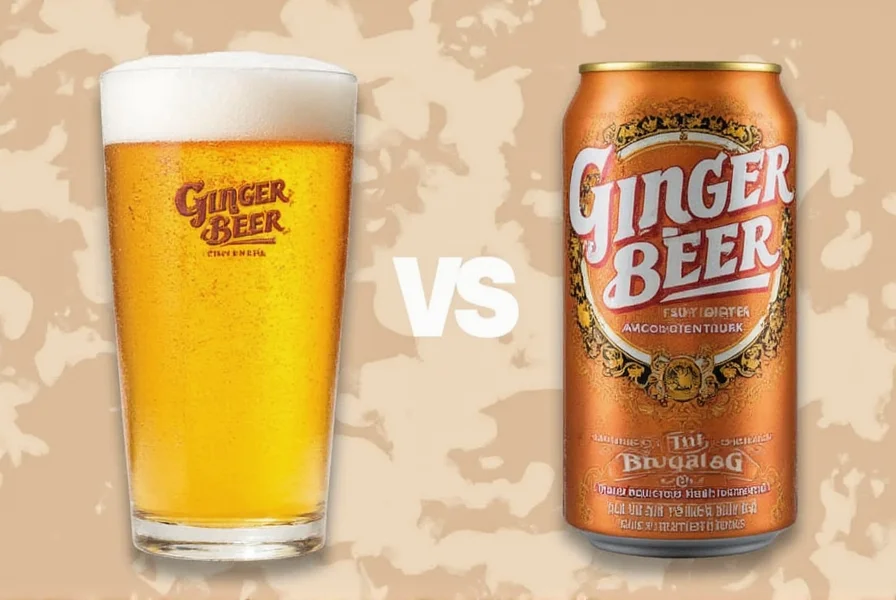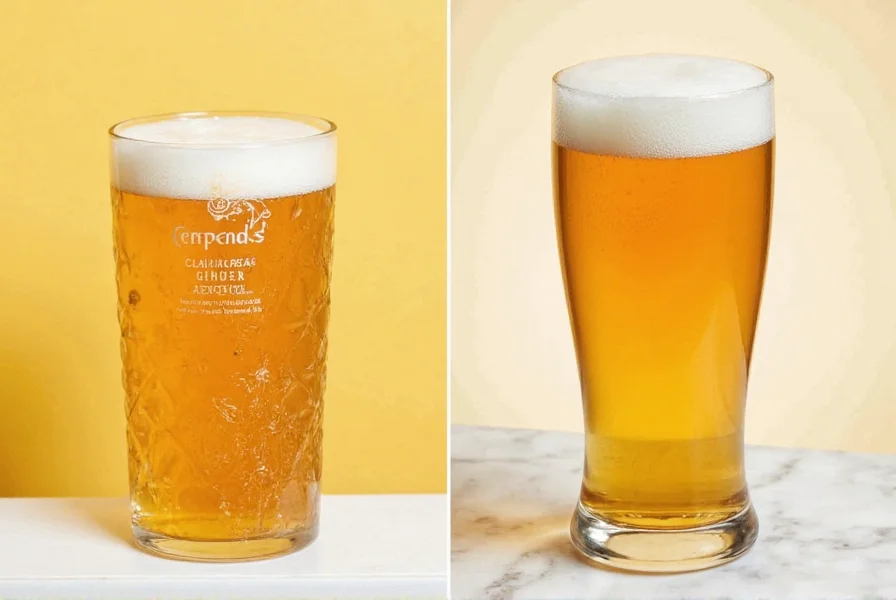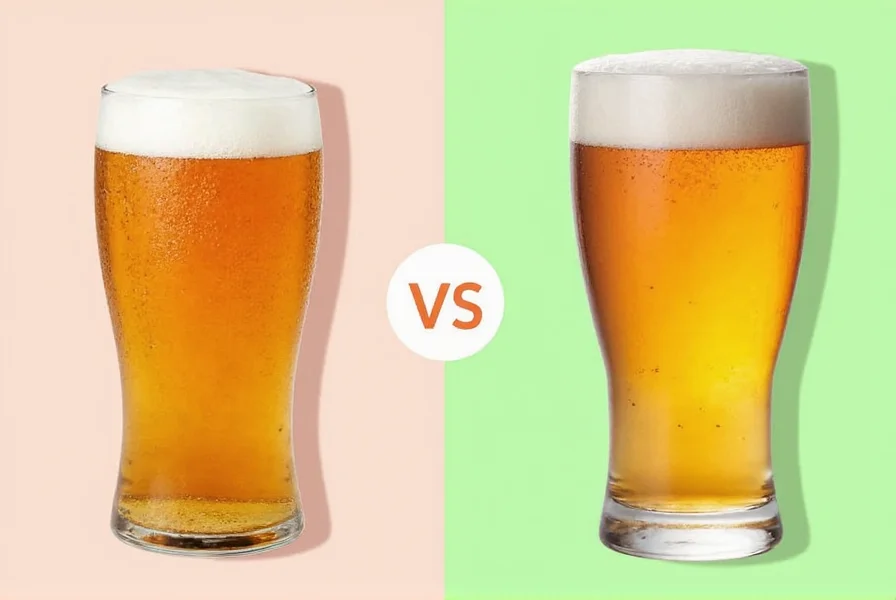Ginger-based beverages have enjoyed a resurgence in popularity, especially as craft mixology and non-alcoholic alternatives gain traction. Understanding the differences between ginger beer and ginger ale isn't just trivia—it affects your cocktail experience, culinary applications, and personal preference. Despite their similar names and shared ginger base, these drinks have distinct characteristics that set them apart.
Historical Origins and Evolution
Ginger beer traces its roots to 18th century England, where it was traditionally brewed through natural fermentation of ginger, sugar, water, and a symbiotic culture of bacteria and yeast known as the "ginger beer plant." This fermentation process gave traditional ginger beer a slight alcoholic content (typically 2-11% ABV). The drink became immensely popular across the British Empire.
Ginger ale emerged later in the 19th century, with Irish apothecary Thomas Joseph Cantrell credited with creating the first version in Belfast around 1851. Canadian John J. McLaughlin later developed the modern golden-style ginger ale in the 1890s, followed by the paler, milder dry-style ginger ale in 1904. Unlike ginger beer, ginger ale was always carbonated rather than fermented, resulting in a milder flavor profile from the beginning.
Production Methods Compared
The fundamental difference between these beverages lies in their production:
| Characteristic | Ginger Beer | Ginger Ale |
|---|---|---|
| Production Method | Traditionally fermented (though most commercial versions now carbonated) | Always carbonated, never fermented |
| Ginger Content | Higher concentration (2-3x more) | Lower concentration |
| Clarity | Cloudy or opaque | Clear |
| Carbonation Level | Generally higher, more aggressive bubbles | Milder carbonation |
| Traditional Alcohol Content | 2-11% ABV (fermented versions) | Non-alcoholic |
| Modern Commercial Versions | Typically non-alcoholic | Non-alcoholic |
Traditional ginger beer required a "plant" (a symbiotic culture) to ferment for several days, creating natural carbonation and complex flavors. Modern commercial ginger beer skips fermentation and simply adds carbonation, but maintains the stronger ginger flavor profile. Ginger ale has always been produced by mixing ginger flavoring with carbonated water and sweeteners.
Taste Profile Differences
Ginger beer delivers a pronounced, spicy ginger kick with noticeable heat and complexity. The flavor is robust, sometimes described as "fiery" or "pungent," with possible citrus or herbal notes depending on the recipe. This intensity makes it stand out in cocktails and pairs well with strong spirits.
Ginger ale offers a much milder, sweeter experience with subtle ginger notes. Dry-style ginger ale (the pale variety) has a crisp, clean taste with minimal ginger heat, while golden-style ginger ale has a deeper color and slightly stronger ginger flavor, though still milder than ginger beer. The sweetness level in ginger ale is typically higher than in ginger beer.
Cocktail Applications and Culinary Uses
The choice between ginger beer and ginger ale significantly impacts cocktail results:
- Moscow Mule - Traditionally requires ginger beer for its signature spicy kick. Using ginger ale creates a much milder, sweeter drink that lacks the characteristic ginger "bite"
- Ginger Highball - Works with either, but ginger beer creates a more robust drink while ginger ale produces a lighter refreshment
- Dark and Stormy - Requires ginger beer (specifically Gosling's in the official recipe) for proper flavor balance with dark rum
- Culinary uses - Ginger beer's stronger flavor works better in marinades, glazes, and reductions where ginger prominence is desired
When substituting one for the other in recipes, expect noticeable flavor differences. Ginger beer will add significant spice and complexity, while ginger ale will contribute sweetness with minimal ginger character.
Popular Brands Comparison
Not all ginger beers and ginger ales are created equal. Here's how leading brands compare:
- Ginger Beer Standouts: Fever-Tree Premium, Bundaberg, Q Mixers, Brooklyn Crafted, Maine Root
- Ginger Ale Leaders: Canada Dry (dry-style), Seagram's (golden-style), Schweppes, Fever-Tree Refreshingly Light
Craft producers have elevated ginger beer with small-batch brewing methods that capture more authentic, complex ginger flavors. Many craft ginger beers now use real ginger root rather than extracts, resulting in more pronounced spice and heat. When selecting either beverage, check ingredient lists—products listing "ginger root" or "fresh ginger" typically offer superior flavor to those using "ginger flavor" or extracts.
Health Considerations and Nutritional Content
Both beverages contain significant sugar content, though options vary:
- Traditional ginger beer: 30-40g sugar per 12oz serving
- Commercial ginger beer: 20-35g sugar per 12oz
- Ginger ale: 25-35g sugar per 12oz serving
- Diet/light versions: 0-5g sugar per serving
The higher ginger concentration in ginger beer may offer slightly more potential digestive benefits, as ginger contains gingerol compounds known for soothing gastrointestinal issues. However, the sugar content in both beverages somewhat counteracts these potential benefits for regular consumption. For medicinal ginger effects, fresh ginger tea or supplements provide more concentrated benefits without the sugar.
How to Choose Between Ginger Beer and Ginger Ale
Selecting the right beverage depends on your intended use:
- Choose ginger beer when you want: pronounced ginger spice, authentic Moscow Mule experience, stronger flavor in cooking, or a more complex non-alcoholic option
- Choose ginger ale when you prefer: milder flavor, less intense ginger presence, higher sweetness, or a more neutral mixer that won't overpower other ingredients
For cocktail enthusiasts, having both options available allows for recipe customization based on personal spice tolerance. Those using ginger beverages for upset stomach relief might prefer ginger beer for its stronger ginger content, though the higher sugar content could be counterproductive for some.
Common Misconceptions Clarified
Several myths persist about these beverages:
- Misconception: All ginger beer contains alcohol
Reality: Modern commercial ginger beer is non-alcoholic; historical versions were fermented - Misconception: Ginger ale is just watered-down ginger beer
Reality: They have different production methods and flavor profiles by design - Misconception: The terms are used interchangeably worldwide
Reality: In many countries, the distinction is legally defined with specific production requirements
Understanding these differences helps consumers make informed choices rather than relying on marketing terminology that sometimes blurs the lines between these distinct beverages.

As craft beverage production continues evolving, the gap between traditional ginger beer and ginger ale may narrow somewhat with innovative products. However, the fundamental distinction between a strongly ginger-forward beverage and a milder, sweeter alternative remains relevant for consumers and mixologists alike. When selecting between ginger beer versus ginger ale, consider your desired flavor intensity, intended use, and personal spice tolerance to make the best choice for your needs.












 浙公网安备
33010002000092号
浙公网安备
33010002000092号 浙B2-20120091-4
浙B2-20120091-4